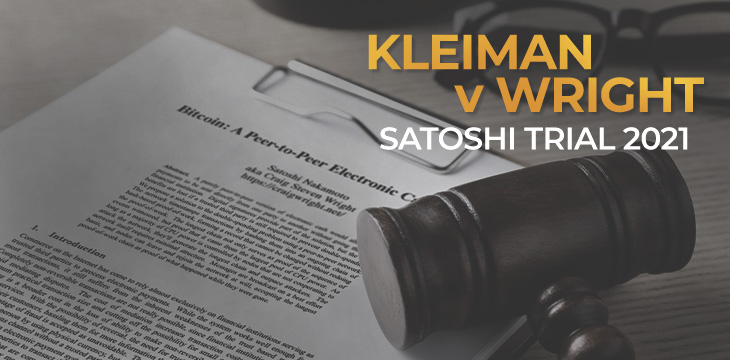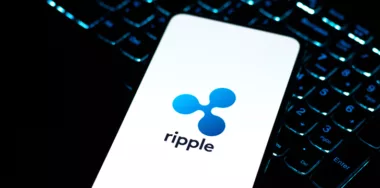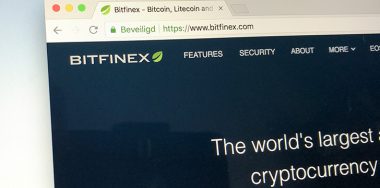The plaintiff and the defense have rested their cases in the landmark Kleiman v Wright litigation, and the jury are expected to begin their deliberations on Tuesday.
The question in front of them is a formidable one: they are set to decide whether Satoshi Nakamoto was the product of Dr. Craig Wright alone, or if it was done in partnership with the late Dave Kleiman. If the latter, they must also decide whether Dave’s estate is entitled to a portion of a Bitcoin fortune worth more than US$70 billion.
Over the last three weeks, the jury has heard two competing stories about the invention of Bitcoin and the events that took place in the years after.
What were those two stories?
The plaintiff: Dr. Craig Wright invented Bitcoin with my brother Dave, then stole the proceeds after he died
Ira Kleiman’s story against Dr. Wright goes something like this.
Dave Kleiman (brother to Ira) and Dr. Craig Wright were close friends with a shared interest in computers.
For Dave’s part, the plaintiff says that he was a self-taught computer programmer, an ex-cop and an Army veteran. He was left paralyzed from the waist-down in a motorcycle accident in 1995, and he’d spend much of the rest of his life in steadily worsening condition, including extended stays in the hospital, before dying in 2013 by likely infection.
Though Dr. Wright and Dave Kleiman were never formal colleagues, they had collaborated in a variety of contexts, including on a widely cited paper on wiping hard drives.
In 2008, or so the plaintiff’s case goes, the two entered a partnership to create a new form of electronic cash which would eventually change the world: Bitcoin. In addition to writing the white paper and building the Bitcoin software together, they allegedly jointly mined “over 1.1 million Bitcoin—a trove that is worth more than 60 billion dollars today” between 2008 and Dave’s eventual death in 2013. Also a product of the partnership was a fortune in Bitcoin and blockchain-related intellectual property.
The plaintiffs don’t say that the partnership was created via written agreement – they only allege that it was formed orally. The only piece of non-testimonial evidence which the plaintiffs rely on from during Dave’s life is an email supposedly sent six months before the creation of the white paper, where Dr. Wright tells Dave that he needs help editing a paper which he plans to release later in the year. Dr. Wright tells him he’s working on a new form of electronic money, and he wants to include his friend by having him edit a document which presumably goes on to become the white paper.
We can only say ‘presumably’ because there is no record of Dave Kleiman accepting the offer—in fact, there is no communication between the two which references the Satoshi Nakamoto partnership at all.
Dave didn’t tell another living soul about the project—except for one conversation alleged to have taken place between him and the plaintiff (brother Ira) at Thanksgiving dinner in 2009. According to testimony given by Ira Kleiman at trial, when it was just the two of them left out of the table, with the other dinner guests out of earshot, Dave told his brother he was working on something “bigger than Facebook,” was working with a wealthy foreign man, and then drew some form of the Bitcoin symbol on the back of a business card.
It’s vitally important to the plaintiff’s case because it’s one of the only instances they can point to where Dave Kleiman has supposedly talked about his world-changing partnership with Dr. Wright. It’s so important that Ira Kleiman even testified that he subsequently heard from two of Dave’s friends—Patrick Paige and Kimon Andreou—that they had the same conversation with Dave while he was alive.
True or not, as it happened the Thanksgiving conversation was the last the brothers would ever have. Ira says they didn’t meet again, not even when Dave was in the hospital in the years before his death.
In 2013, Dave Kleiman discharged himself from the hospital he’d been at for almost two full years. He was found dead at his home in April of that year. According to Ira Kleiman’s lawsuit, Dave died a Bitcoin billionaire.
“This news confronts Craig with a very important decision,” says Kyle Roche, attorney for Ira Kleiman in his opening statement at the beginning of trial.
“Does he reach out to Dave’s family and tell them about the secret fortune they jointly created together, or does he keep the secret and try to keep that fortune all for himself?”
According to Ira Kleiman, Dr. Wright chose option two: he transferred all of the partnership’s assets to his own name, forging and backdating agreements to the transfers and making them look like they were made in Dave’s lifetime. He filed lawsuits in Australia against one of the companies the two ran together, W&K Info Defense Research, LLC to give effect to the agreements.
The plaintiff is relying on evidence which is supposed to have come from the Australian Taxation Office, which had shared with Ira a trove of documents collected from audits into Dr. Wright’s many companies in Australia. They include agreements signed between W&K and various of Dr. Wright’s companies—they reference varying amounts of Bitcoin being passed between companies which appear to have been part of a loan agreement involving Dave.
Meanwhile, the plaintiff says that Dr. Wright got in touch with Dave’s father, who put Wright on to Ira. Wright told Ira over email that Dave played a big role in helping create Bitcoin and wanted his family to know.
Ira Kleiman would go on to sue Dr. Wright for tens of billions of dollars.
The defense: Dr. Wright invented Bitcoin alone, and there is no evidence that Dave Kleiman was (or was capable of being) his partner in that endeavor
The defense is simple: Dr. Wright created and mined Bitcoin alone. They say that the plaintiffs are unable to produce a scintilla of evidence to show there was ever a partnership between Dave Kleiman and Dr. Wright, and that what evidence does exist runs entirely contrary to the idea that Dave might have been one half of a Satoshi Nakamoto partnership.
Though he and Dave were close friends, the only role Dave Kleiman can be said to have played in the creation of Bitcoin was via his status as a pillar of support for Wright.
“This story, ladies and gentleman, represents the difference between friendship and partnership,” said Amanda McGovern, attorney for Dr. Wright in the opening statement for the defense.
To the defense, the evidence portrays a case purely built from the imagination of Ira Kleiman and his attorneys to grab the chance at a life-changing sum of digital assets long after the death of Dave Kleiman.
To that end, the jury heard that Ira had sued two other of Dave’s best friends over the same allegations he would end up suing Dr. Wright for: that they had stolen his brother’s Bitcoin. Those suits were dropped shortly before launching the action against Dr. Wright.
More strange is that of the 14 devices identified by parties in this case as having belonged to Dave Kleiman, Ira had edited, overwritten or even formatted every one of them even after being warned by Dr. Wright that they could contain valuable information.
Forensics expert Nicholas Chambers, introduced at trial, said that the contents of the drives are unrecoverable, though he could find some potential references to Bitcoin. Yet, Ira Kleiman is uninterested in picking up this thread, instead choosing to search for the bitcoins he is supposed to believe his brother mined via the Florida courts.
The defense also points to the absence of evidence which speaks to a partnership between the two, an absence which is made especially conspicuous by emails introduced by the defense which show the lengths at which the two would talk about the projects they can be proven to have worked on.
For example, the aforementioned data wiping paper they collaborated on was accompanied by back-and-forth correspondence during its writing and the exchange of congratulations when it was complete. There is similar communication over a series of proposals the two had submitted (via W&K) to secure contracts with Department of Homeland Security.
No such communication exists which reference the two collaborating on Bitcoin.
The defense also points to the absence of any evidence that Dave Kleiman told anyone about his role in Bitcoin during his life, something they back up with testimony from Dave’s best friends at trial. Throughout trial, they confirmed—to a person—that they never spoke with Dave Kleiman about Bitcoin. Contrary to sworn testimony from Ira, they also deny ever having a conversation similar to Ira’s dubious 2009 Thanksgiving story.
The defense also showed that Dave Kleiman possessed neither the technical nor physical capabilities to have invented and worked on Bitcoin from 2008 to his death in 2013.
Speaking to Dave’s technical ability, his close friend and former colleague Kimon Andreou testified that Dave Kleiman wasn’t a programmer, nor could he code. This was further evidenced by expert testimony from cybersecurity expert Kevin Madura, who opined on Dave Kleiman’s CV (both his written CV and his actual CV based on evidence from his career) and found that there was no evidence Dave was able to code.
Medically, lawyers for Dr. Wright produced an infectious disease expert, Dr. Stewart MacIntyre, to testify about Dave Kleiman’s health in the years leading up to his death, during which time he was supposedly working on the earliest iterations of Bitcoin and mining hundreds of thousands of coins. MacIntyre testified quite forcefully that Dave was in hospital almost constantly from as early as 2010, and during this time he had often complicated procedures leading up to his discharge in 2013—against doctor’s orders. After reviewing thousands of pages of Dave Kleiman’s medical records, including pages of notes from his attending physicians, he was of the belief that Dave Kleiman was most likely far too sick to have played a role in Satoshi Nakamoto.
Additionally, the defense produced evidence from the months before Dave died which showed that he was destitute and in desperate need of money. At various times he had sold his wheelchair and air conditioner unit, and had applied (and was subsequently declined) for a relatively punitive payday loan. Further, his home was in foreclosure at the time of his death. Despite these circumstances, there is no evidence he ever attempted to access the trove of Bitcoin he is supposed to have accumulated, nor did he make any noise about having his Bitcoin stolen from him by an ex-business partner.
As for the ATO documents that were discussed in front of the jury at length during the plaintiff’s portion of the case, the defense has been careful to point out that none of this evidence—which they say is forged—speaks to the existence of a partnership to create and/or mine Bitcoin. However, they also point out that none of the evidence has been authenticated. Dr. Wright himself, during his own testimony, said that the ATO had embarked on a campaign of harassment against him and his companies after he told them of his invention, and that many of the ATO documents being relied on by the plaintiffs were successfully challenged by him in Australia.
The defense also rebutted the examples of Dr. Wright telling other people of Dave’s apparent role in the Satoshi Nakamoto project, such as in emails to Dave’s family. When put on the stand, an emotional Dr. Wright told of the important role that Dave Kleiman played in his life.
Most importantly, he said it was Dave who talked him into pursuing his vision for Bitcoin—something which ended up costing Wright his marriage at the time.
“I failed my marriage because I wanted to invent this thing, and Dave understood. So, yes, he was critical to me. I don’t know how else to put it.
“What is true is I exaggerated because Dave had no one remember him, and he was the most important person in my life for many years.”
The jury
After four weeks, thousands of exhibits and dozens of hours of testimony, the trial of the century and the billions of dollars at stake therein now depend on the jury beginning their deliberations in Miami on Tuesday. There’s some chance the verdict is handed down before the court breaks for Thanksgiving on November 25, a break which lasts until the following Monday.
CoinGeek features Kurt Wuckert Jr. in recap coverage which will be livestreamed daily at 6:30 p.m. EST on our YouTube Channel.
Watch our Day 14 Special Report from the Kleiman v Wright trial here:
Check out all of the CoinGeek special reports on the Kleiman v Wright YouTube playlist.
New to blockchain? Check out CoinGeek’s Blockchain for Beginners section, the ultimate resource guide to learn more about blockchain technology.









